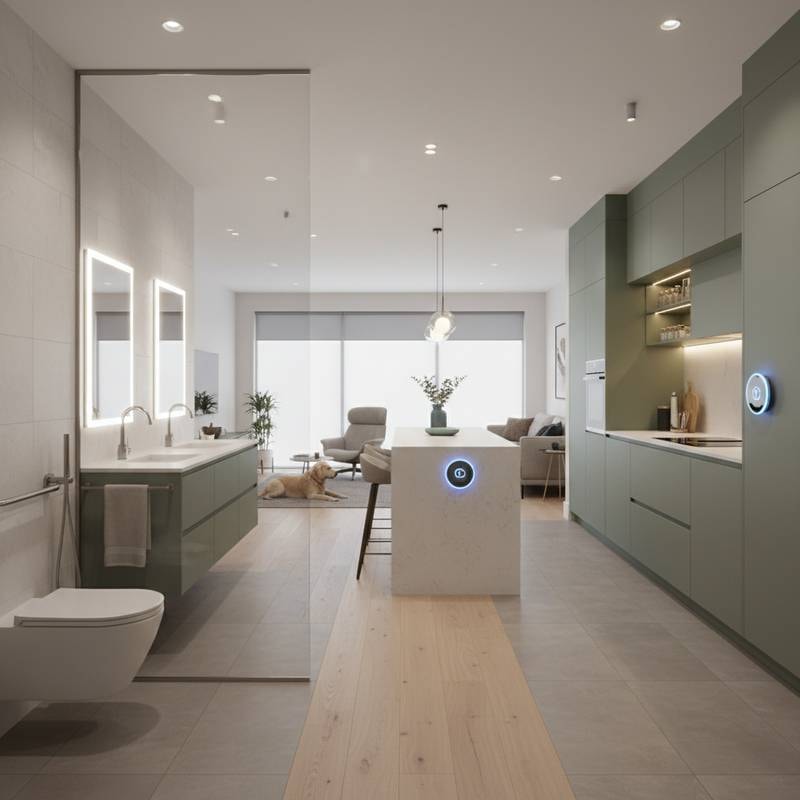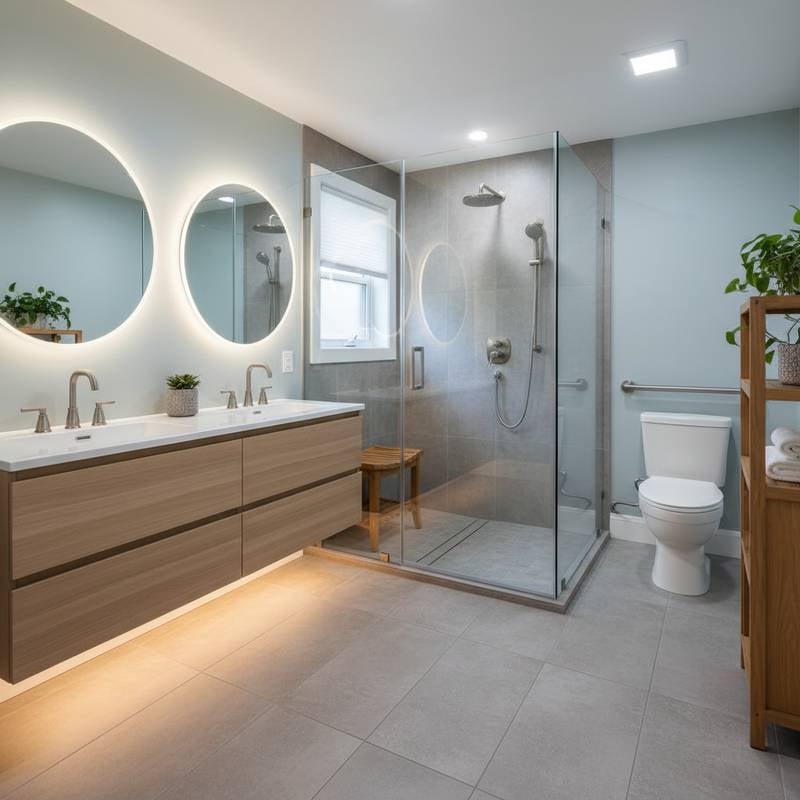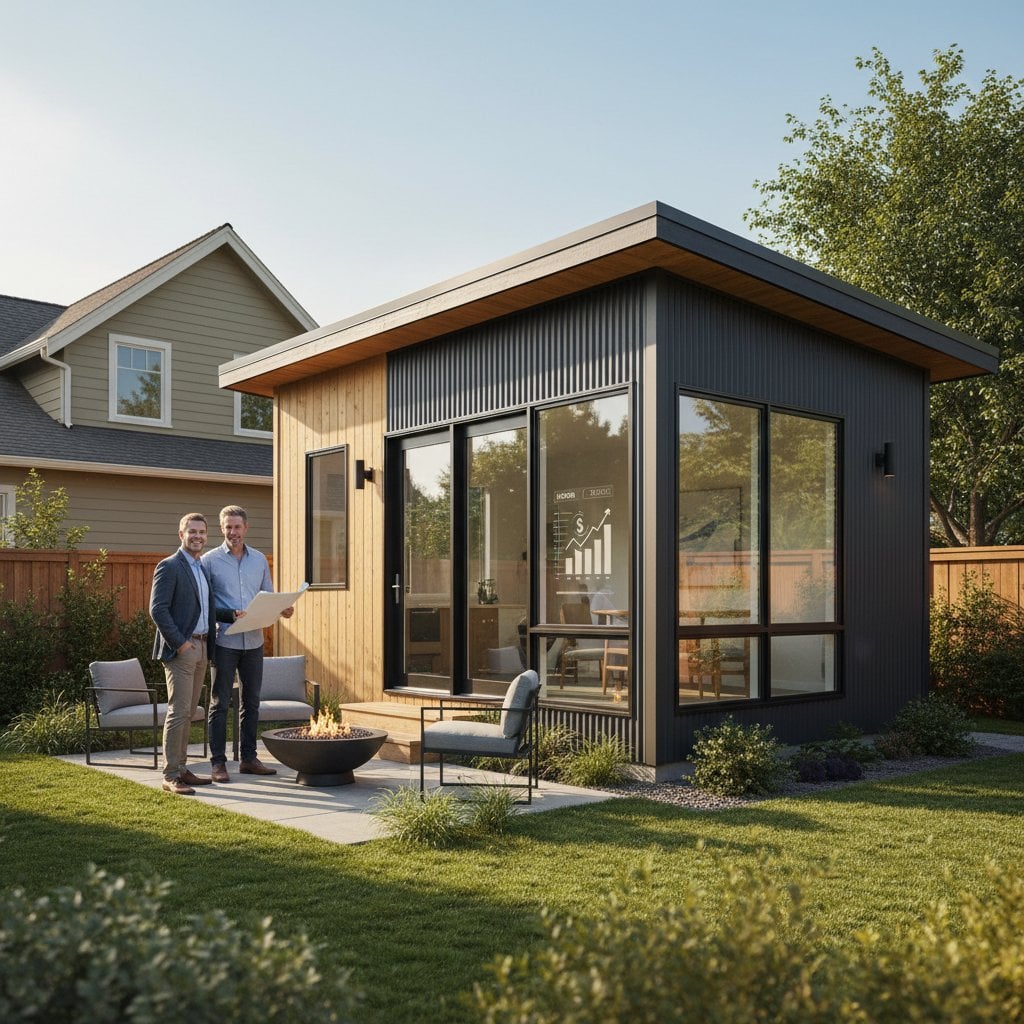Smart Updates for Safe Aging at Home in 2025
Aging in place enables individuals to preserve independence, comfort, and familiarity within their own environments. Thoughtful renovations transform homes into supportive spaces that accommodate changing mobility needs while preserving aesthetic appeal and property value. This guide details practical remodeling strategies to enhance safety, navigation, and daily living without compromising design or functionality.
Guide Overview
This resource addresses essential elements for creating an accessible home:
- Critical modifications for enhanced safety and ease of use
- Integration of smart technologies to aid independent living
- Design recommendations for bathrooms, kitchens, and entryways
- Estimated costs and potential returns on investment
- Guidance on engaging professionals and selecting reliable partners
- Strategies for ongoing upkeep and longevity
1. Enhancing Entryways for Seamless Access
Importance of Entryway Modifications
Entryways serve as the primary gateway to the home, where hazards like uneven surfaces or inadequate illumination can pose immediate risks. These areas influence overall accessibility for residents and visitors alike. Targeted improvements foster secure transitions and reduce injury potential from the outset.
Investment and Value Considerations
Expanding an exterior door generally requires $800 to $2,500, influenced by material selections and any necessary structural adjustments. Installing a ramp or achieving a zero-threshold entry typically ranges from $3,000 to $8,000. Such enhancements broaden market appeal, often increasing resale value by attracting diverse buyers seeking inclusive features.
Approaching the Project: DIY or Professional
Experienced individuals may manage straightforward updates, such as hardware replacement or lighting installation. However, alterations involving structural elements, like door widening or threshold modifications, demand licensed contractors versed in load-bearing considerations and compliance with local regulations.
Practical Enhancements
- Position motion-activated lights adjacent to entry doors for automatic illumination.
- Substitute traditional doorknobs with lever-style handles to simplify operation.
- Incorporate smart locks operable via smartphone or numeric keypad for convenient access.
- Construct a sheltered entry zone to shield against weather elements and minimize slipping risks.
2. Bathroom Designs for Secure Independence
Significance of Bathroom Adaptations
Bathrooms present heightened fall risks due to wet surfaces and confined spaces. As physical capabilities evolve, features that support stability and reach become essential for maintaining personal hygiene routines without assistance.
Cost Analysis and Long-Term Benefits
Basic accessibility upgrades, including grab bar installations and shower adjustments, cost between $2,000 and $6,000. Comprehensive overhauls with walk-in tubs or curbless showers may exceed $10,000. These investments not only prioritize safety but also elevate home equity through versatile, modern amenities.
DIY Feasibility Versus Expert Involvement
Simple additions like anti-slip mats or adjustable showerheads suit capable DIY efforts. Relocating fixtures, reinforcing walls for grab bars, or altering plumbing configurations necessitate professional expertise to adhere to safety standards and avoid water damage.
Functional Improvements
- Install grab bars near toilets and showers, ensuring secure mounting into wall studs.
- Opt for walk-in showers with fold-down benches and handheld sprayers for seated bathing.
- Select lever faucets and touchless fixtures to ease operation for limited dexterity.
- Incorporate heated floors and towel warmers for added comfort in cooler climates.
Blending Aesthetics with Utility
Contemporary bathroom elements, such as frameless glass enclosures and natural stone tiles, integrate seamlessly with accessibility needs. Non-slip textured flooring and ambient lighting create inviting spaces that feel luxurious rather than utilitarian.
3. Kitchen Configurations for Effortless Functionality
Role of Kitchen Enhancements
Kitchens demand frequent activity, where challenges in reaching or prolonged standing can lead to strain or accidents. Purposeful redesigns streamline food preparation, promoting efficiency and reducing physical demands.
Financial Overview and Resale Impact
Targeted accessibility alterations span $5,000 to $15,000 for partial updates. Complete redesigns incorporating universal principles can surpass $30,000. Universally designed kitchens command premium resale prices by merging practicality with enduring style.
Project Execution: Self-Managed or Specialist-Led
DIY options include adding pull-out organizers or task lighting beneath cabinets. Adjustments to counter elevations, plumbing rerouting, or electrical configurations require certified professionals to ensure code compliance and structural integrity.
Targeted Adjustments
- Reduce countertop height to 34 inches in select zones to accommodate seated tasks.
- Prioritize drawer storage over lower cabinets for straightforward retrieval.
- Employ D-shaped pulls in place of knobs for improved handling.
- Integrate under-cabinet illumination to eliminate shadows during use.
- Feature pull-down mechanisms in upper cabinets for reachable storage.
Harmonizing Form and Purpose
Materials like quartz surfaces, soft-closing mechanisms, and induction ranges deliver elegance alongside safeguards. Induction cooktops maintain exterior coolness, mitigating burn hazards while offering exact temperature regulation.
4. Integrating Smart Technologies for Proactive Support
Value of Technology in Daily Living
Smart systems extend beyond convenience, providing monitoring and automation that anticipate needs and alert to potential issues. These tools empower residents to manage their environments independently, enhancing confidence and security.
Budget and Efficiency Gains
Basic setups with voice assistants and sensors cost $500 to $2,000. Advanced networks including fall detection and health integrations range from $3,000 to $7,000. Such innovations often yield insurance discounts and improve energy efficiency, bolstering overall home worth.
Implementation: Personal or Professional Setup
Connecting off-the-shelf devices like smart bulbs suits tech-savvy users. Custom installations involving wiring, integration with existing systems, or app configurations benefit from specialists to guarantee reliability and data privacy.
Key Technology Integrations
- Deploy voice-activated assistants for hands-free control of lights and appliances.
- Install automated lighting that adjusts based on time or occupancy.
- Use motion sensors linked to alerts for monitoring movement patterns.
- Incorporate medication dispensers with reminders via app notifications.
- Add environmental sensors to regulate temperature and detect leaks promptly.
Seamless Incorporation
Discreet hubs and compatible devices blend into existing decor, avoiding obtrusive appearances. User-friendly interfaces ensure accessibility for all ages, fostering a connected yet unobtrusive home ecosystem.
5. Selecting Flooring for Secure Movement
Critical Role of Flooring Choices
Inconsistent or slick flooring contributes significantly to fall incidents. Appropriate selections and seamless transitions facilitate smooth navigation, particularly with assistive devices.
Expense and Durability Factors
Renewing flooring in high-use zones like corridors and kitchens averages $5 to $12 per square foot. Options such as resilient vinyl, cushioned cork, or minimal-pile carpeting provide longevity and user comfort.
Installation Approaches
Experienced DIY participants can lay floating vinyl planks effectively. Subfloor preparation, old material removal, or surface leveling warrants professional handling to achieve uniform results.
Selection Guidelines
- Steer clear of glossy finishes that produce reflective glare.
- Favor matte or patterned textures to enhance grip.
- Ensure room transitions remain level or gently sloped.
- Position secure mats in zones prone to moisture or traffic.
6. Optimizing Bedrooms and Living Spaces for Restful Accessibility
Necessity of Comfort-Focused Adjustments
Bedrooms and communal areas must promote tranquility while upholding safety standards. Minor repositioning or additions yield substantial improvements in usability and well-being.
Cost Spectrum and Practical Returns
Low-effort changes, including furniture shifts or supplemental lighting, incur minimal expense yet deliver outsized safety benefits. Expansive modifications like doorway expansions or mobility aids span $2,000 to $10,000.
Recommended Modifications
- Maintain clear pathways of at least 36 inches for unobstructed passage.
- Place rocker-style switches bedside for effortless activation.
- Select sturdy chairs featuring supportive arms and firm padding.
- Secure area rugs with anti-slip undersides or eliminate them to prevent tripping.
- Explore height-adjustable beds to customize support and elevation.
Engaging Professionals for Optimal Results
Expert involvement proves essential for projects impacting structure, utilities, or compliance. Engage certified contractors for tasks involving load-bearing elements, water lines, or wiring. Seek designations like Certified Aging-in-Place Specialist (CAPS) to confirm specialized knowledge in inclusive design.
Prior to commitment:
- Obtain bids from several providers.
- Verify credentials, past work, and liability protection.
- Examine proposed blueprints thoroughly.
- Establish defined timelines and phased payments.
Collaboration with skilled teams guarantees adherence to standards and effective outcomes.
Frequently Asked Questions on Accessibility Upgrades
What doorway width supports wheelchair access?
A 32-inch minimum permits passage, while 36 inches offers greater maneuverability.
Which flooring best suits seniors?
Low-sheen vinyl or cork provides grip and padding without excessive shine.
Must grab bars appear utilitarian?
Contemporary options in coordinating finishes integrate elegantly with surroundings.
How do smart devices address forgetfulness?
Timers, alerts, and assistants facilitate routines like medication intake.
Are permits required for these changes?
Structural, plumbing, or electrical modifications typically demand approval; consult local authorities.
Ensuring Long-Term Safety and Functionality
Post-renovation vigilance preserves the home's protective qualities. Inspect grab bar fastenings, light efficacy, and floor integrity quarterly. Refresh smart device power sources routinely and apply software updates. Arrange periodic expert reviews of plumbing and electrical components to sustain reliability.
These strategic home enhancements secure autonomy, ease, and reassurance. They simplify routines, elevate asset value, and cultivate enduring habitability.











